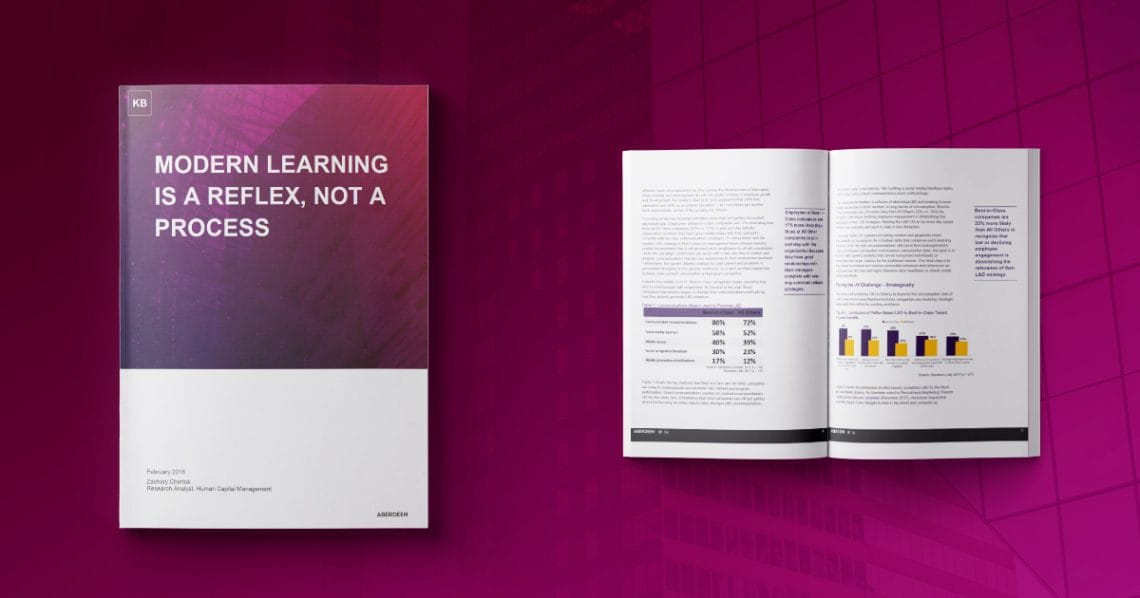
UX in the design and delivery of L&D programs is critical to developing great learner experiences.
While many corporate L&D programs have strived to understand employee interests to promote content and programs, their focus is now shifting to understand the connection between user experience and learning programs to the success of their eLearning strategy.
Modern Learning is a Reflex, Not a Process from Aberdeen Group concludes that because the majority of learning management systems remain fully automated, existing L&D assets inhibit social engagement and feedback, which detract from the learner user experience and contribute to stagnating or declining employee participation and engagement in L&D initiatives.
Solving these issues lies in a particular focus on user experience in the deployment of L&D content and programs to encourage employee engagement. Companies that align content with the goals of not only the organization, but those of their employees as well are more likely to improve engagement.
Why?
Because the user experience is becoming more of a social reflex.
UX can satisfy individual learning needs
The success of L&D activities has focused on tracking the performance of the program, instead of metrics focused on how employees consume and engage with learning content. Today, best-in-class companies are using learning content analytics to read more into how content is consumed and engaged with.
One of the core issues with the modern LMS strategy is that it relies heavily on management level reflexive learning content that doesn’t satisfy employees’ learning needs as it relates to their jobs or necessary skill sets.
Satisfy your learners’ content appetite
One solution is designing an L&D user experience that’s more like social media platforms that makes the learning experience less disruptive. Social media UX is geared at making content and program more consumable. In the realm of L&D, this means breaking learning materials into more easily digestible and interactive chunks that reflect an employee’s (or a group of employees) individual skills.
In a reflexive learning experience, content is build into smaller modules for individual consumption or or assembled into larger courses for more traditional learners – and making that content accessible to learners anytime, anywhere and on any device.
Taking a reflexive approach to L&D is working well for best-in-class companies:
- 60% say a reflex-based approach to L&D is encouraging higher levels of engagement among 50% of their employees, and;
- 63% find it easier to recruit from within their own ranks more than 40% of the time.
Emphasizing user experience in the design and delivery of L&D programs is critical to increasing employee engagement and retention.
Elevate your workforce
For companies that are proactive about boosting employee engagement with their L&D programs, reflex-based, atomized learning contributes to a higher likelihood that employees develop the aggregate individual skills the organization needs. This approach also helps to elevate your existing workforce by identifying and eliminating any skills gaps that may lead to job vacancies through promotions or advancements.
Download the Aberdeen Group study to learn more.
